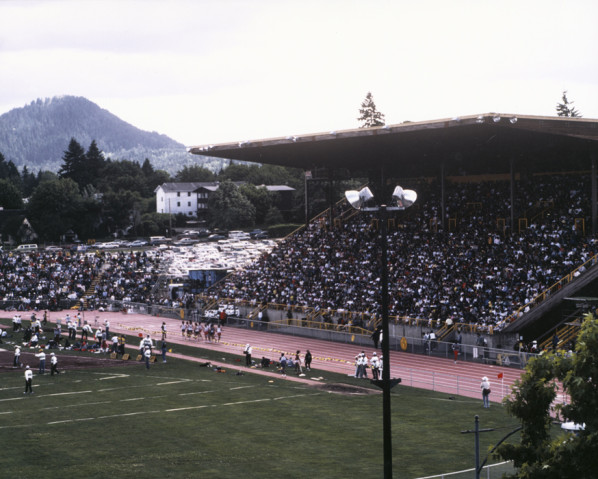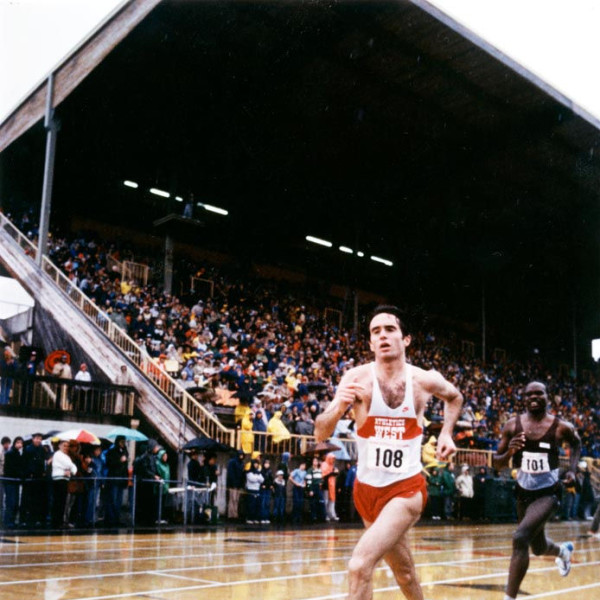Transitioning into the Next Phase
 Nearly a century old, Hayward Field continues to undergo numerous renovations to ensure that it remains one of the top track and field facilities in the country. Throughout the years, the facility has been modified to meet the needs of athletes and spectators.
Nearly a century old, Hayward Field continues to undergo numerous renovations to ensure that it remains one of the top track and field facilities in the country. Throughout the years, the facility has been modified to meet the needs of athletes and spectators.
The first major improvement to Hayward Field, the addition of a $10,000 six-lane cinder track, took place in 1921, just two years after the field was constructed. Shortly thereafter, the University built a west grandstand to expand the seating capacity. During the next 45 years, minor alterations were steadily implemented. The construction of Autzen Stadium in 1967 designated Hayward Field as an exclusive track and field venue, and in 1970, a donation by the Stevenson family was used to expand the track to eight lanes with an all-weather surface.
 During the next two decades, Hayward Field slowly began to lose bids to host major meets to other, more modern venues. Despite dwindling budgets, University leaders, particularly Bill Bowerman, remained committed to keeping Hayward Field competitive. Bowerman enlisted community support, and, in 1988, a $1.9 million renovation transformed and modernized the 440-yard track into the standard 400-meter oval.
During the next two decades, Hayward Field slowly began to lose bids to host major meets to other, more modern venues. Despite dwindling budgets, University leaders, particularly Bill Bowerman, remained committed to keeping Hayward Field competitive. Bowerman enlisted community support, and, in 1988, a $1.9 million renovation transformed and modernized the 440-yard track into the standard 400-meter oval.
In the last 15 years, the additions of a new scoreboard and the Bowerman Building, as well as the recent completion of the Powell Plaza, keep Hayward Field competitive with other venues, keeping its “running” tradition alive. Today, community members and University officials continue rallying together to prepare Hayward Field for landmark events such as the U.S. Olympic Trials. The years continue to accumulate for Hayward Field, but with improvements and renovations slated to keep it up-to-date, the facility is now getting its second-wind.